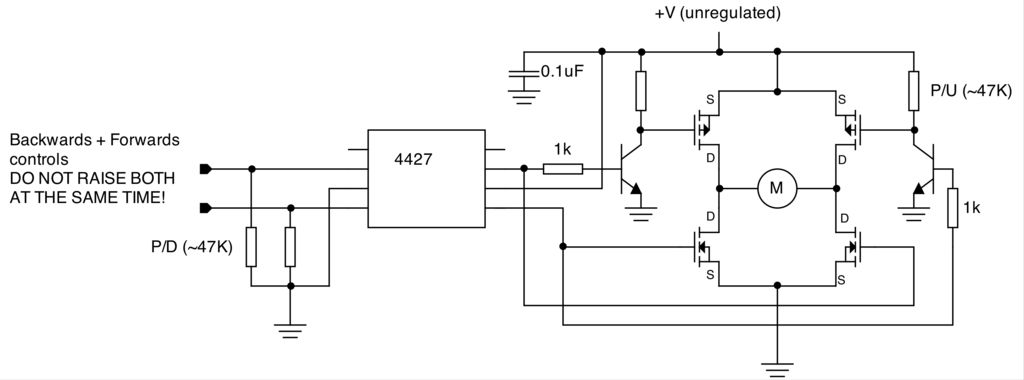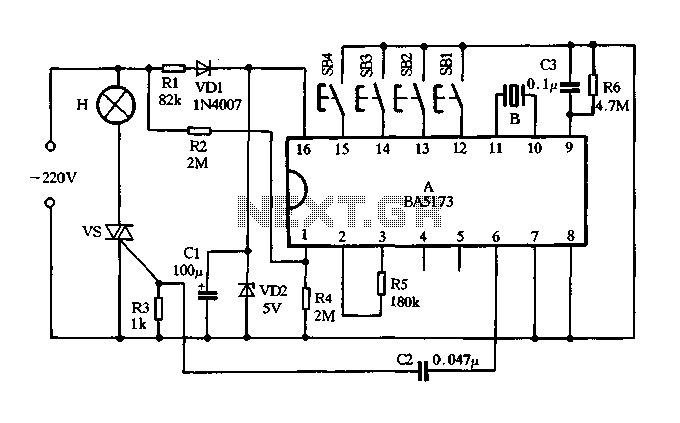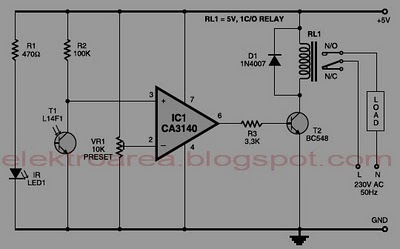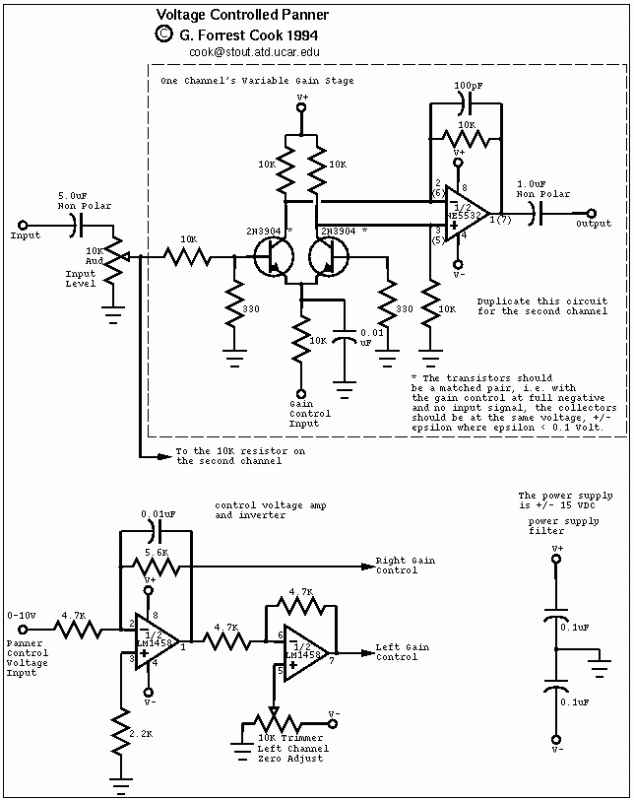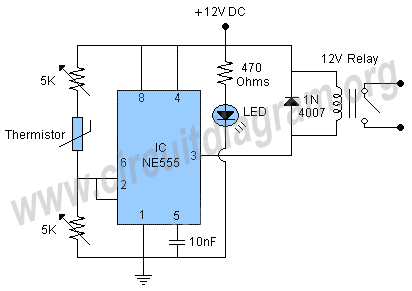
stepper remote control car

Stepper motor control circuit diagram using TLE5206 for remote control car.
The stepper motor control circuit is designed to manage the operation of a stepper motor, specifically utilizing the TLE5206 integrated circuit. This circuit is particularly suitable for applications in remote control cars, where precise motor control is essential for maneuverability and performance.
The TLE5206 is a dual H-bridge driver that allows for bidirectional control of the stepper motor. It can handle a wide range of supply voltages and provides built-in protection features such as thermal shutdown and overcurrent protection, ensuring reliable operation in varying conditions.
In the schematic, the stepper motor is connected to the outputs of the TLE5206, which are configured to drive the motor phases. The control signals for the TLE5206 can be generated from a microcontroller or a dedicated control circuit, which sends step and direction commands to the driver. The microcontroller typically outputs pulse-width modulation (PWM) signals that dictate the speed and direction of the motor.
Additional components in the circuit may include capacitors for power supply decoupling, resistors for current limiting, and diodes for flyback protection, which safeguard the circuit from voltage spikes caused by the inductive load of the stepper motor. The design should also include provisions for heat dissipation, as the TLE5206 may generate heat during operation, especially under load.
Overall, this stepper motor control circuit is a robust solution for controlling the motion of stepper motors in remote control applications, providing both efficiency and reliability through the use of the TLE5206 driver.Stepper motor control circuit Stepper motor control circuit diagram using TLE5206 for remote control car.. 🔗 External reference
The stepper motor control circuit is designed to manage the operation of a stepper motor, specifically utilizing the TLE5206 integrated circuit. This circuit is particularly suitable for applications in remote control cars, where precise motor control is essential for maneuverability and performance.
The TLE5206 is a dual H-bridge driver that allows for bidirectional control of the stepper motor. It can handle a wide range of supply voltages and provides built-in protection features such as thermal shutdown and overcurrent protection, ensuring reliable operation in varying conditions.
In the schematic, the stepper motor is connected to the outputs of the TLE5206, which are configured to drive the motor phases. The control signals for the TLE5206 can be generated from a microcontroller or a dedicated control circuit, which sends step and direction commands to the driver. The microcontroller typically outputs pulse-width modulation (PWM) signals that dictate the speed and direction of the motor.
Additional components in the circuit may include capacitors for power supply decoupling, resistors for current limiting, and diodes for flyback protection, which safeguard the circuit from voltage spikes caused by the inductive load of the stepper motor. The design should also include provisions for heat dissipation, as the TLE5206 may generate heat during operation, especially under load.
Overall, this stepper motor control circuit is a robust solution for controlling the motion of stepper motors in remote control applications, providing both efficiency and reliability through the use of the TLE5206 driver.Stepper motor control circuit Stepper motor control circuit diagram using TLE5206 for remote control car.. 🔗 External reference
